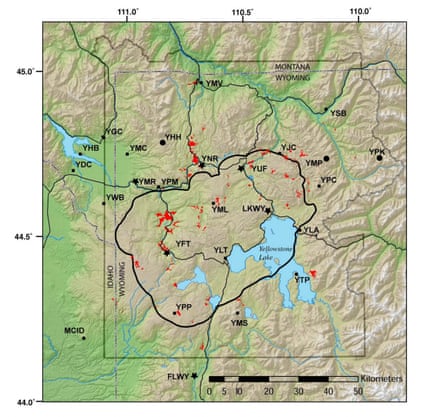Move aside Metallica and Led Zeppelin: scientists are planning to make “rock” music by letting seismic activity headline in a live flute performance.
On Tuesday, Dr Domenico Vicinanza of the UK’s Anglia Ruskin University will use a computer program he has developed to turn real-time data, recorded by a seismograph at Yellowstone national park in the US, into a musical score.
“I am essentially mapping the [amplitude of the] vibrations and the oscillations to [notes],” he said.
The score will be put on a screen as it appears and will be played, live on stage, by Dr Alyssa Schwartz, visiting assistant professor of flute and musicology at Fairmont State University, as part of the 2023 Internet2 Community Exchange conference in Atlanta, Georgia.
As the amplitude of the vibrations produced by volcanic activity increase, so too will the notes rise up the musical scale. Likewise, if the seismograph data shows dramatic oscillations, so too will the melody.

With the musical notes determined live, the piece will – by definition – be a premiere.
Vicinanza appears confident it will be a memorable event. “I’m pretty sure I am going to get something that is interesting because you always have some sort of [seismic] activity [at Yellowstone],” he said.
Yellowstone – a super volcano – experiences between 1,500 and 2,500 earthquakes a year, with the activity detected by a network of 50 seismographs run by the US Geological Survey.
“Nearly 50% of the earthquakes occur in swarms that cluster together,” said Vicinanza. “So it’s a fantastic playground for any kind of scientist that is interested in seismology, geophysics, mechanics or, like me, data science and music, because it’s a very unique.”
It is not the first time Vicinanza, a composer, physicist and researcher in auditory display, has sought to tune into the unusual – he previously used 37 years’ worth of data collected by Voyager 1 and 2 to create a musical piece producing, as the Guardian described it, “a duet from deep space”.

Vicianza said he was drawn to the idea of turning earthquakes into music as a way to provide a different perspective on something that seems familiar: the trace of a seismograph formed by a needle on paper.
after newsletter promotion
“With music we can expand the timescale as much as we want to, we can look at the micro patterns, we can look at the series of peaks and troughs in the data, we can look at how certain characteristics build up or change in time,” he said.
But, he added, the piece would also raise questions about the role of technology in art.
“This is a technology enabled art performance,” Vicianza said. But he stressed the human performer remained crucial, with Schwartz bringing her own interpretation of the score to the piece and using the notes to tell a story.
“She will be able to highlight what she will think at that moment is the most relevant thing,” he said.
Vicianza said he hoped the performance might also give listeners good vibrations about science.
“[Science] is something that everybody can enjoy,” he said.